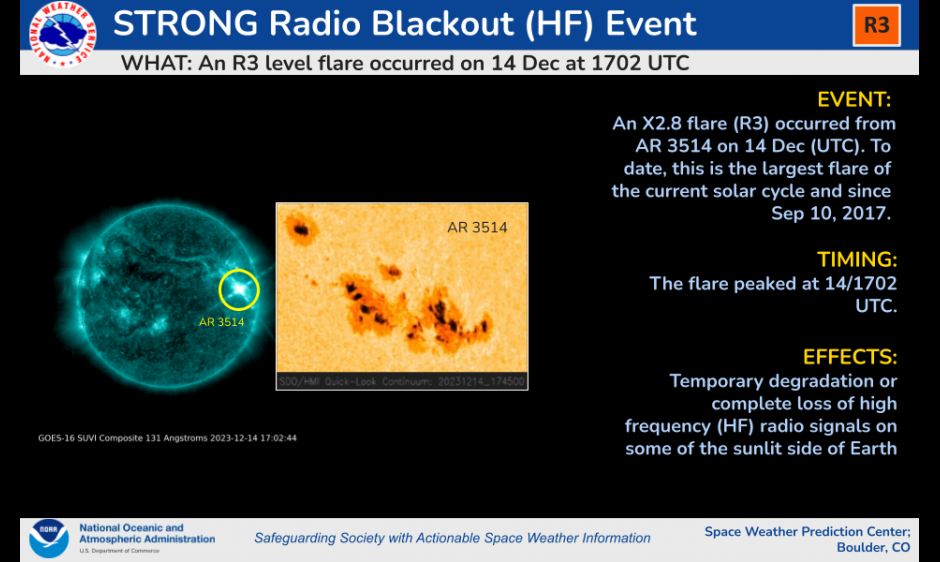
Sunspot Region Produces X2.8 Flare, Largest Since Sep 10, 2017
An X2.8 flare occurred on 14 Dec at 1702 UTC from AR 3514, which produced R3 (Strong) radio blackouts on portions of the sunlit side of the Earth. These blackouts can lead to temporary degradation or complete loss of high frequency radio signals. This is the largest flare of this solar cycle and since Sep 10, 2017, when an X8.2 flare was observed at GOES-15. This sunspot region will be monitored closely by SWPC forecasters given its potential to produce additional M-class and greater flares. Flare activity can be monitored at GOES X-ray Flux | NOAA / NWS Space Weather Prediction Center.